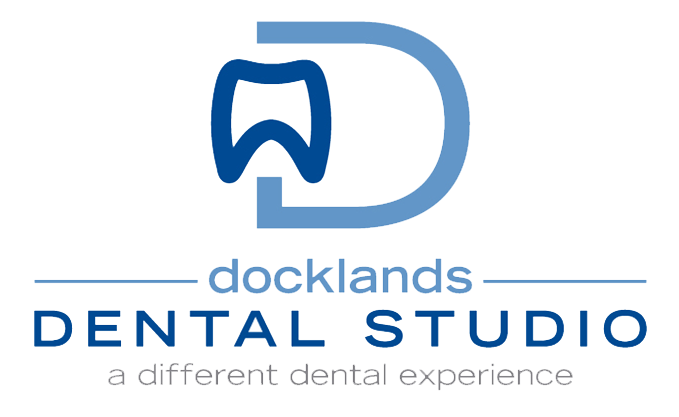Most people understand the basics of tooth brushing. We know how to clean the teeth of plaque and food residues, to prevent feeding the bacteria that create cavities. However, flossing may be a bit less well understood. Many people seem to believe that the purpose of flossing is to remove food from between the teeth. In truth, flossing serves a different and far more valuable function!
Every human mouth contains millions of microscopic bacteria. No matter how expertly you clean your teeth, you can never totally remove these organisms. They are simply a part of your ecosystem. You can, however, reduce their numbers with good hygiene and keep them from invading the most vulnerable parts of the mouth. Flossing the teeth may be a great way to remove bits of food that get stuck in the teeth, but its primary function is to remove bacteria from the teeth and gums.

Each tooth has four to five surfaces that need to be cleaned. When your brush your teeth, you clean two or three of those surfaces, but you must use floss to clean the other two. If you don’t floss, or if you don’t floss correctly, it’s like leaving 30 percent of your teeth uncleaned.
Would you like to learn more about oral health and hygiene? Visit Docklands Dental Studio for a check-up. Our hygiene staff can answer all your oral health questions and help you understand your teeth and gums better. Call us today at 0488-799-487 for an appointment.
How to Floss, The Right Way
Eve if you are a devoted daily flosser, you should familiarize yourself with the latest advice on flossing technique. Oral hygiene recommendations change over time. As research and medical advances increase, we learn more and more about oral health. Sometimes the latest advice may contradict something we were taught decades ago, so it’s an ongoing learning process.
(For example, did you know that at one time, dentists advised patients to floss by pulling the whole length of floss through each space between the teeth, like pulling a needle and thread through a stitch? Strange, huh?)
Rule 1: Floss Every Day
Unlike twice daily tooth brushing, it is only recommended that you floss the teeth once a day. Most people choose to make flossing the last step of their nightly oral hygiene routine. The reason being that it’s better to floss after you brush the teeth rather than before. You’re less likely to gunk up the floss if you’ve already brushed your teeth and removed the bulk of the plaque from the teeth.
Despite this advice, many people admit to flossing only sporadically or once every few days. Flossing is an easy addition to your nightly routine, so it’s worth taking a couple of extra minutes to get it done. Many cases of gingivitis and gum disease may have been preventable, had a patient been more regular about routine daily flossing.
Rule 2: Floss Every Day
Yes, that’s not a misprint. Even if you make mistakes in your technique–as long as you floss every day, you are doing a great job at flossing.
The problem with irregular flossing is that it becomes a self-propagating decline in oral health. Let’s say you forget to floss for a week when on vacation. You forgot to pack your floss, so you feel entitled to a vacation from flossing. The problem with not flossing for several days is that when you do floss again, your gums may be likely to bleed. They may become sore or swollen, so the next day you think “ouch, my gums need a day to rest.” In truth, every day you “rest” your gums is a day that bacteria proliferate in the gingival tissues. It’s better to floss every day, even if your gums bleed or become swollen, than to skip a day.
If your gums aren’t used to daily flossing, be patient. They will adjust in time. Keep flossing every day, and within a couple of weeks they will be more resistant. If the bleeding and swelling doesn’t stop within two weeks, make an appointment. You may need a periodontal cleaning to get your gums back on track.
Rule 3: Use the Right Kind of Floss
What is the right kind of floss? It depends. Whatever kind of floss makes it easy and comfortable for you to floss every day is the right kind of floss. Waxed, unwaxed, flavored, Teflon-coated—whatever works best for you is going to get the job done. As long as you are using a product labeled “dental floss” and not a human hair or a strand of stray thread from an article of clothing, it is a good choice.
Many children and adults prefer to use flossing picks as opposed to lengths of loose floss. This can be especially helpful to patients who wear braces, since flossing picks can access spaces not usually accessible with loose floss. If you find flossing uncomfortable or unwieldy, experiment with different flossing tools, or even consider an oral irrigator.
Oral irrigators, also called water flossers, can accomplish the same task that flossing achieves. Using a jet of pressurized water, these devices are capable of reaching the same surfaces on the sides of the teeth and at the gum line. They are also less abrasive to the gums, which makes them a popular choice with patients with sensitive gum tissue.
Rule 4: Use the Right Amount of Floss
If you use loose floss, how much should you use each night? Twelve inches? Fourteen inches? Would you believe that the recommended length for each use is actually 18 inches? It’s true; this is the amount of floss you need to ensure you have clean floss for each tooth. After you floss each tooth, you should switch to a new section of unused floss to prevent spreading bacteria. Remember, you are flossing the teeth to remove plaque and bacteria. If you reuse dirty floss, you are not cleaning, but rather just spreading it around.
Rule 5: Don’t Pop Your Floss
Popping or snapping the floss between the teeth can damage the gums. If your teeth are so tightly crowded together that you regularly hear that popping sound, you may be inadvertently shredding your gum tissue. You can avoid this by trying a different type of floss. Waxed floss may work better for you than unwaxed. Glide floss is coated with a non-stick layer of Teflon, which makes it slide in and out more smoothly than waxed.
Rule 6: Up and Down, Into the C-Curve
When flossing, think of scraping against the tooth, starting at the top and working your way down from the gum tissue. Repeat this a few times and then gently go into the C-curve where the tooth meets the gum tissue. Your goal is to scrape bacteria off of the teeth, one side at a time. Simply moving the floss in and out, once at each junction, isn’t going to remove as much bacteria and plaque. You need that top-down scraping action.
Rule 7: Don’t Forget the Last Four Teeth
If you’ve always though of flossing as “removing food from between the teeth” you may have been missing four critical teeth. The last four molars in the back of your mouth sit up against the cheek tissue, but they should be flossed as thoroughly as all your other teeth. Don’t forget to floss the back side of each back tooth. Molars are already more vulnerable to decay, due to their deep ridges and position. Letting plaque and bacteria sit on the backs of these teeth can lead to tartar build-up, which can lead to decay.
Flossing is one of the best ways to clean the sides of the teeth and prevent bacteria from colonizing the gum tissue. It is considered as essential to daily oral hygiene as basic toothbrushing is. If your attitude to flossing has been inconsistent, now is a great time to promise yourself you will floss every day from now on.
Would you like to learn more about oral health and hygiene? Visit Docklands Dental Studio. Call us today at 0488-799-487 for an appointment.
If you live in South Melbourne, Docklands Dental Studio is only 5-10 minutes away by car or taxi. Just take Montague Street towards the city and then take Wurundjeri Way.
Also published on Medium.
